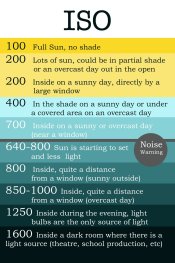Your question actually touches both technical and aesthetic factors. Different people emphasize different things; you see it on this site. Confidence in exposure frees you to express aesthetics. When to use more or less apparent sharpness, how to manage motion, when to us a particular ISO? That is a lifetime of experience which presumes you know what you see and what you want to show. This is not a matter of "tips and tricks."
If you can get centered around exposure it leaves you clear to think about and execute aesthetics. Bad exposure confounds hue and tone. Poor use of sharpness (focus, apparent sharpness, depth of field) confounds the eye. Put these together and no one can see what you mean. The better you get at this, the quicker it happens, the more incidental and less obscuring it is of the creative process.
Exposure is determined by the amount of light managed by ISO, SS, & f. Commit to the one setting (ISO, SS, f) that is most important to making the shot. For good exposure you must make a basic assumption. The easiest is to build habit around ISO. This means that you have to make some preliminary decisions about what ISO works with what sort of light. Here is a link to a pretty good basic article on ISO:
https://www.digitalcameraworld.com/tutorials/cheat-sheet-how-to-understand-iso-settings
They have a cheat-sheet. I have attached another.
Next, you need to understand that your light meter will give you an accurate exposure value only if you can meter a Neutral Tone. Gray cards are great for this. Here is a link to a short video to get you started:
At this point you must commit to a second setting; that is both a technical and aesthetic choice.
Next you can decide on your aperture. Do you want more or less depth of field? You don't have to measure light for this, just technically decide what you want to express your vision.
If you want sharpness, it's 5.6 on that lens. That set, you just twiddle the SS wheel until the meter says what you want.
If you want more or less apparent Depth you change the aperture and then it is the same action with the SS wheel.
or
If you need a certain SS for motion/blur management, set that after the ISO. You don't have to meter light for this, just technically decide what you want to express your vision, then dial-in the aperture the meter likes.
If the resulting SS is too slow and aperture open as far as it will go, you will have to adjust ISO. Amplify to the next highest ISO. Then go about the SS & f priorities and meter to taste.
It's pretty simple but can be topsey-turvey. And it is that experience that can confound any aesthetic sense. Just remember, you have to set at least one aspect to get going: your choice. The next can also be a technical/aesthetic decision; what do you want to show? For the last, use your meter on a neutral tone.





